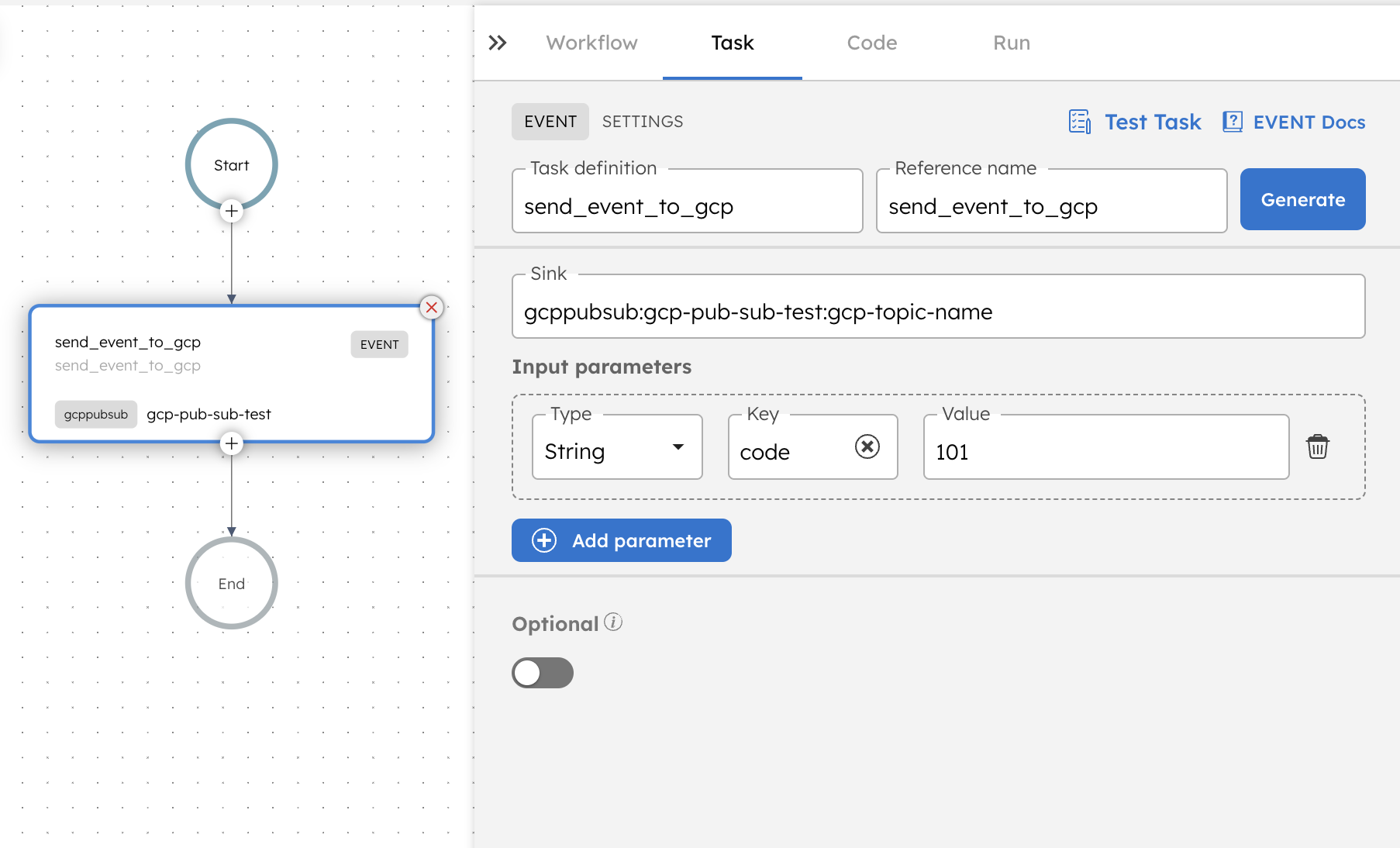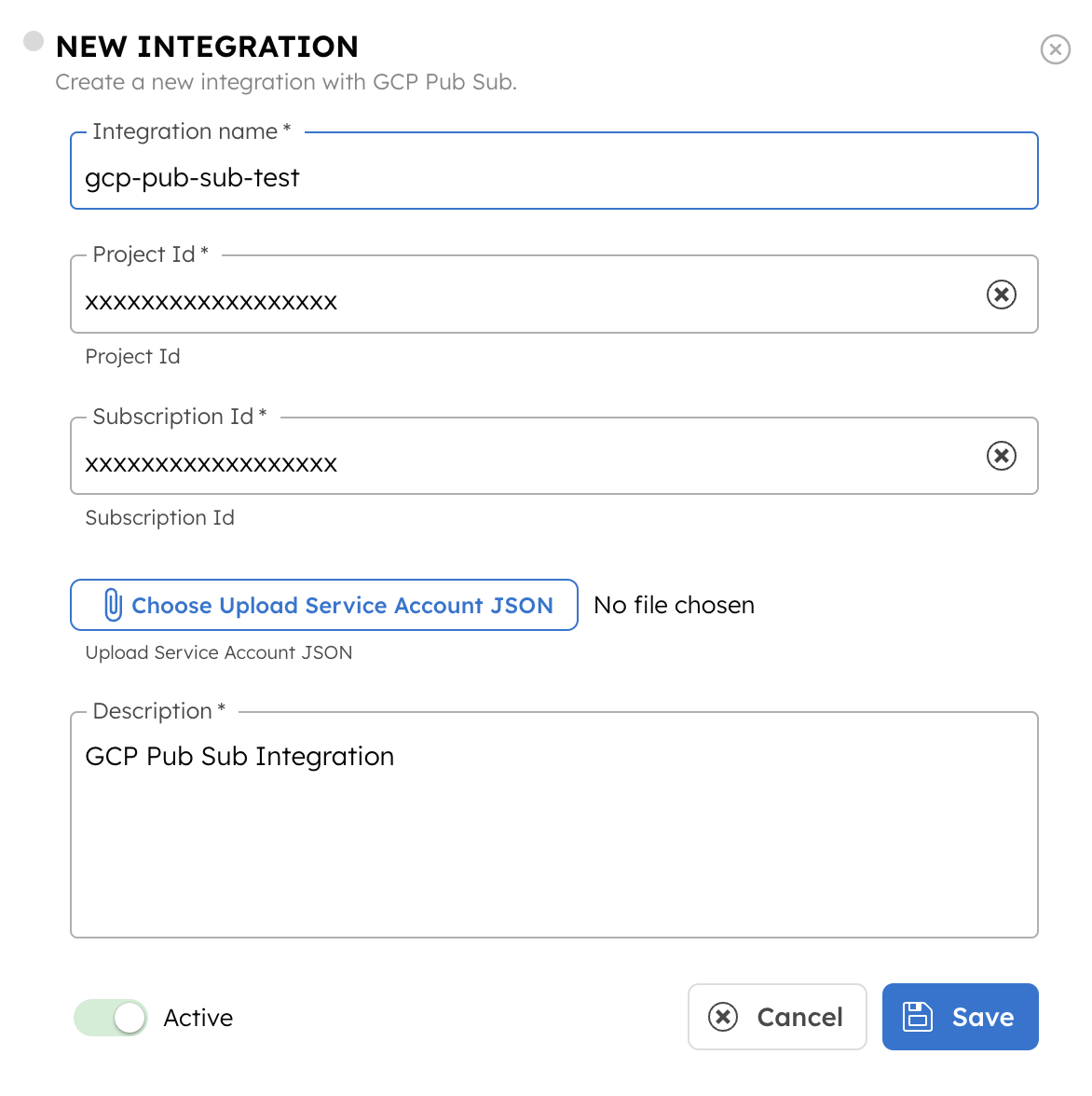Understanding the Fundamentals of Cloud Messaging with Pub/Sub
The publish/subscribe (pub/sub) messaging pattern is a powerful paradigm for asynchronous communication. It decouples message producers (publishers) from message consumers (subscribers). This decoupling offers several advantages, including increased scalability, improved fault tolerance, and greater flexibility in system design. Publishers send messages to a central message broker without needing to know anything about the subscribers. Subscribers, in turn, receive only the messages they are interested in, based on predefined criteria.
Google Cloud Pub/Sub is a fully managed, real-time messaging service that implements the pub/sub pattern. It enables you to build scalable and event-driven systems. With Google Cloud Pub/Sub, applications can exchange data reliably and asynchronously. The core components of Google Cloud Pub/Sub are topics, subscriptions, and messages. A topic represents a named channel to which publishers send messages. A subscription represents an interest in a specific topic. Subscribers create subscriptions to receive messages published to a topic. Messages contain the data being transmitted between applications. Google Cloud Pub/Sub ensures reliable delivery of messages to all subscribed parties.
The architecture of Google Cloud’s pub sub gcp service makes it suitable for a wide range of use cases. These can include data streaming, event notification, and application integration. The pub sub gcp service allows for building robust and scalable applications. It abstracts away the complexities of message queuing and delivery. By leveraging the pub sub gcp capabilities, developers can focus on building core business logic. The pub sub gcp messaging pattern simplifies building distributed systems. Its decoupling benefits improve the overall resilience of your application. Understanding the fundamentals of pub/sub messaging and Google Cloud Pub/Sub is crucial for developing modern, cloud-native applications, and taking full advantage of pub sub gcp features.
How to Implement a Basic Pub/Sub System on Google Cloud
Setting up a basic pub sub gcp system on Google Cloud involves several key steps. First, you’ll need a Google Cloud project. If you don’t have one, create a new project through the Google Cloud Console. Next, enable the Pub/Sub API for your project. This can also be done via the Google Cloud Console by searching for “Pub/Sub” and enabling the API. You can use the gcloud CLI, Google Cloud SDK, or the console.
With the API enabled, the next step is to create a topic. Topics are named resources to which publishers send messages. Using the gcloud CLI, you can create a topic with the following command: gcloud pubsub topics create [YOUR_TOPIC_NAME]. Replace [YOUR_TOPIC_NAME] with your desired topic name. After creating the topic, you need to create a subscription. A subscription represents a stream of messages from a specific topic. Subscribers receive messages from this subscription. Create a subscription using the command: gcloud pubsub subscriptions create [YOUR_SUBSCRIPTION_NAME] --topic=[YOUR_TOPIC_NAME]. Again, replace the bracketed placeholders with appropriate names. This command creates a pull subscription. Alternatively, you can create a push subscription that delivers messages to a specified endpoint. Google Cloud pub sub gcp offers flexibility.
Now that you have a topic and subscription, you can publish a message to the topic. Use the following command: gcloud pubsub topics publish [YOUR_TOPIC_NAME] --message="Hello, Pub/Sub!". This publishes the message “Hello, Pub/Sub!” to your topic. To receive the message, you can pull it from the subscription. Use the command: gcloud pubsub subscriptions pull [YOUR_SUBSCRIPTION_NAME] --limit=1 --auto-ack. The --limit=1 flag retrieves only one message, and --auto-ack automatically acknowledges the message, preventing it from being resent. For more complex applications, consider using the Pub/Sub client library for your preferred language (Python, Java, etc.). These libraries provide more programmatic control over publishing and subscribing to messages, allowing for efficient management of your pub sub gcp system. You can find examples on the Google Cloud documentation.
Delving into the Architecture of Google Cloud Pub/Sub
Google Cloud Pub/Sub is engineered for robust performance and scalability. It is a globally distributed message queue service. This design ensures high availability and fault tolerance. Message ordering is a key consideration in many applications. Pub/Sub offers ordered delivery. It guarantees that messages are received in the same sequence they were published, but only within a specific region. This ordering feature is vital for use cases where the sequence of events matters.
Message persistence in pub sub gcp is designed to reliably store messages. Even during outages, messages are retained. Fault tolerance is achieved through redundancy. Pub/Sub replicates messages across multiple zones. This protects against zonal failures. Scalability is a core tenet of Pub/Sub. It can handle a massive volume of messages. It dynamically scales resources to meet demand. Pub sub gcp offers both regional and global topics. Regional topics store messages within a specific Google Cloud region. Global topics store messages across multiple regions. The choice between regional and global topics impacts availability and latency. Regional topics offer lower latency within the region. Global topics provide higher availability across regions.
Understanding the architecture of pub sub gcp is critical for building resilient applications. The choice of topic and subscription type affects performance and cost. Message ordering, persistence, and fault tolerance are essential aspects. Developers can leverage these features. They can build scalable and reliable event-driven systems. Pub/Sub’s architecture supports diverse use cases. It handles everything from data ingestion to real-time analytics. By understanding these architectural considerations, developers can optimize their pub sub gcp implementations for their specific needs. The flexibility of pub sub gcp allows adaptation to various architectural requirements. Choosing appropriate configurations enhances performance and reduces operational overhead. Google Cloud Pub/Sub continues to evolve. It provides increasingly sophisticated features for modern cloud applications.
Comparing Google Cloud Pub/Sub with Other Messaging Queues
Google Cloud Pub/Sub (pub sub gcp) stands out in the crowded field of messaging queues. Several alternatives exist, each with unique strengths and weaknesses. RabbitMQ, Kafka, and Amazon SQS are among the most popular. A comparison reveals how Google Cloud Pub/Sub distinguishes itself in terms of scalability, ease of use, cost, and features. This service separates publishers from subscribers. This ensures efficient communication.
RabbitMQ is an open-source message broker known for its flexibility and advanced routing capabilities. However, RabbitMQ’s scalability is limited compared to Google Cloud Pub/Sub (pub sub gcp), especially when dealing with massive message volumes. Kafka, on the other hand, excels in high-throughput, persistent messaging, making it ideal for use cases like log aggregation and stream processing. Its complexity can be a barrier to entry for some users. Amazon SQS is another managed message queue service, offering simplicity and integration with other AWS services. The pub sub gcp service provides global scalability. It provides a robust feature set, that positions it as a strong contender for various applications.
The strengths of pub sub gcp become apparent in specific use cases. For data ingestion, its scalability and reliability ensure no data loss, even during peak periods. In event notification scenarios, the near-real-time delivery and fan-out capabilities of Google Cloud Pub/Sub (pub sub gcp) make it ideal for triggering actions across distributed systems. Real-time analytics benefits from its ability to handle high-velocity data streams. Cost is another key consideration. While pricing models vary, the efficiency and scalability of Google Cloud Pub/Sub (pub sub gcp) can result in cost savings, particularly for large-scale deployments. When deciding on a system that requires effective decoupling, pub sub gcp is a strong choice.
Optimizing Performance and Cost in Your Google Cloud Pub/Sub Implementation
Optimizing performance and cost within Google Cloud Pub/Sub implementations requires a multifaceted approach. Several strategies can significantly impact the efficiency and economic viability of your messaging system. Understanding these techniques is crucial for maximizing the value derived from the pub sub gcp service.
One key area is message batching. Sending messages in batches, rather than individually, reduces the overhead associated with each transmission. This minimizes the number of API calls and improves throughput. Message attributes can also be used effectively to filter messages at the subscription level, preventing unnecessary processing of irrelevant data. Furthermore, selecting the appropriate subscription type is paramount. Push subscriptions deliver messages directly to an endpoint, while pull subscriptions require subscribers to actively request messages. Choosing between push and pull depends on the specific use case and subscriber capabilities. Push is suitable when low latency is critical and subscribers can handle incoming requests. Pull may be preferable for subscribers with limited resources or when complex message processing is required. Subscription backlog management is also vital. A growing backlog indicates that subscribers are unable to keep pace with the message flow. Monitoring the backlog size and adjusting subscriber capacity or message processing rates can prevent message loss and ensure timely delivery. Efficient utilization of pub sub gcp necessitates careful planning around these factors. This ensures that resources are appropriately allocated and that the system operates within defined cost parameters.
Effective monitoring is crucial for identifying performance bottlenecks and cost drivers. Stackdriver Monitoring (now Cloud Monitoring) provides valuable insights into the operation of pub sub gcp. Metrics such as message throughput, latency, and backlog size can be tracked to pinpoint areas for improvement. By analyzing these metrics, developers can identify inefficient message processing, under-provisioned subscribers, or suboptimal configuration settings. Regularly reviewing these metrics allows for proactive adjustments, preventing performance degradation and unnecessary costs. Furthermore, cost optimization involves carefully considering the pricing model for pub sub gcp. Understanding the costs associated with message storage, data transfer, and API calls is essential for making informed decisions about system design and usage patterns. By adopting these best practices and continuously monitoring the system, organizations can optimize the performance and cost of their Google Cloud Pub/Sub implementation, ensuring a scalable and cost-effective messaging solution. The pub sub gcp system’s performance hinges on these proactive measures.
Securing Your Google Cloud Pub/Sub System
Securing your Google Cloud Pub/Sub system is crucial for protecting sensitive data and ensuring the integrity of your message flow. Google Cloud offers robust security features that, when properly configured, can significantly mitigate potential risks. Access control is paramount. Identity and Access Management (IAM) roles and permissions are the primary mechanism for controlling who can access and manage your pub sub gcp topics and subscriptions. By assigning appropriate roles to users, groups, and service accounts, you can restrict access to only those who need it. For example, a service account used by an application to publish messages should only have the `roles/pubsub.publisher` role on the specific topic it publishes to. Similarly, a subscriber application’s service account should only have the `roles/pubsub.subscriber` role on the relevant subscription.
Service accounts play a vital role in authenticating applications that interact with pub sub gcp. Avoid using user accounts for application authentication, as this can lead to security vulnerabilities if the user’s credentials are compromised. Instead, create dedicated service accounts with minimal necessary privileges. These service accounts can then be used by your applications to authenticate and authorize their requests to the Pub/Sub API. To further enhance security, consider using workload identity federation, which allows you to authenticate applications running outside of Google Cloud without needing to manage service account keys directly. This reduces the risk of key leakage and simplifies credential management. Google Cloud Pub/Sub also supports encryption at rest and in transit. Data stored within Pub/Sub is automatically encrypted at rest using Google-managed encryption keys. For data in transit, Pub/Sub uses TLS encryption to protect messages as they are transmitted between publishers, subscribers, and the Pub/Sub service. You can also use customer-managed encryption keys (CMEK) for encryption at rest, giving you greater control over your encryption keys.
Regularly review your IAM policies and audit logs to ensure that access to your pub sub gcp resources is properly controlled and that no unauthorized activity is occurring. Stackdriver Logging provides detailed logs of all Pub/Sub API calls, which can be used to track access and identify potential security incidents. Implementing these security measures will help you protect your Google Cloud Pub/Sub system from unauthorized access, data breaches, and other security threats. Proper configuration of IAM roles, service accounts, and encryption, combined with ongoing monitoring and auditing, is essential for maintaining a secure and reliable messaging infrastructure. Consider implementing principles of least privilege when assigning roles and permissions, granting only the minimum level of access required for each user, group, or service account. This helps to minimize the potential impact of a security breach.
Advanced Use Cases for Google Cloud Pub/Sub
Google Cloud Pub/Sub excels in complex scenarios, extending beyond basic messaging. Its capabilities shine in building real-time data pipelines, powering microservices architectures, and enabling global notification systems. These advanced use cases demonstrate the versatility and scalability of pub sub gcp for demanding applications. The pub sub gcp service provides the backbone for event-driven architectures that require reliable and high-throughput message delivery.
One compelling application of pub sub gcp is constructing real-time data pipelines for streaming analytics. Imagine a scenario where data from various sources, such as IoT devices, web applications, and mobile apps, needs to be processed and analyzed in real time. Google Cloud Pub/Sub acts as the central nervous system, ingesting and distributing this data stream to multiple processing engines, like Google Cloud Dataflow or Apache Spark. These engines perform real-time analytics, generate insights, and trigger alerts, all with minimal latency. This use case showcases pub sub gcp’s ability to handle massive data volumes and deliver near-instantaneous results. Furthermore, the decoupling provided by pub sub gcp allows individual components of the pipeline to be updated or scaled independently without impacting the overall system.
Another significant use case lies in implementing microservices architectures with event-driven communication using pub sub gcp. In this paradigm, applications are built as a collection of independent, loosely coupled services. These services communicate with each other through asynchronous events. Google Cloud Pub/Sub facilitates this communication by providing a reliable and scalable message bus. When a service needs to notify other services about a change in state or a new event, it publishes a message to a specific topic. Other services that are interested in this type of event subscribe to that topic and receive the message. This approach promotes modularity, resilience, and scalability. If one service fails, it does not bring down the entire system. Also, individual services can be scaled independently based on their specific needs. Pub sub gcp provides a robust and efficient mechanism for managing this event-driven communication, crucial for modern, distributed applications. A final example is creating a global notification system, allowing you to send notifications to millions of users across different devices and platforms using pub sub gcp.
Troubleshooting Common Issues with Google Cloud Pub/Sub
When working with Google Cloud Pub/Sub, encountering issues is a common part of the development process. This section addresses some frequent problems and offers guidance on diagnosing and resolving them, ensuring a smoother experience with your pub sub gcp implementation. Message delivery failures are a primary concern. These can stem from various factors, including incorrect topic or subscription configurations. Validate that the subscription is correctly attached to the intended topic and that the service account used for publishing messages has the necessary permissions. IAM roles play a vital role in controlling access; verify that the publisher has the “pubsub.topics.publish” permission and the subscriber has the “pubsub.subscriptions.consume” permission. Network connectivity issues can also impede message delivery. Check the network configuration of your compute instances or applications to confirm they can reach the Pub/Sub service endpoint. Firewall rules might need adjustment to allow traffic on the appropriate ports.
Subscription backlog, where messages accumulate without being processed, is another challenge. This often indicates that the subscriber is unable to keep up with the rate of incoming messages. Scaling the number of subscriber instances or optimizing the processing logic within the subscriber application can alleviate this backlog. Examine the subscriber’s performance metrics, such as CPU utilization and memory consumption, to identify potential bottlenecks. Increasing the acknowledgement deadline can also help, providing subscribers with more time to process messages before they are redelivered. However, a prolonged acknowledgement deadline can also lead to duplicate message processing if instances crash. Monitoring tools, like Stackdriver, are invaluable for tracking subscription backlog and identifying the root cause of performance issues in your pub sub gcp setup.
Authorization errors are another hurdle to overcome. These errors typically arise from incorrect service account configurations or missing IAM permissions. Double-check that the service account used by your application has the required roles for accessing Pub/Sub resources. Use the principle of least privilege when granting permissions, granting only the necessary access to perform specific tasks. Regularly review and update IAM policies to minimize the risk of unauthorized access. Also, investigate your pub sub gcp setup for potential misconfigurations in the authentication process. Ensure that the application is correctly authenticating with Google Cloud using the appropriate credentials. By systematically addressing these common issues, you can build robust and reliable messaging systems with Google Cloud Pub/Sub.



